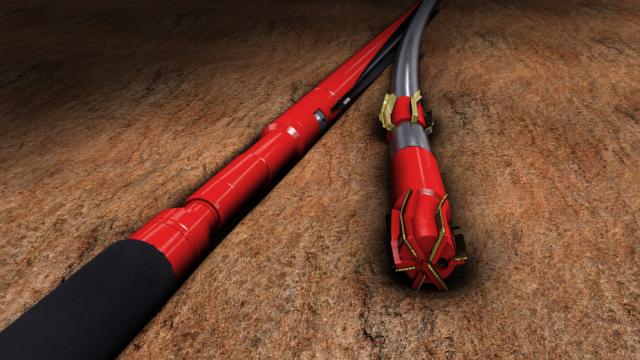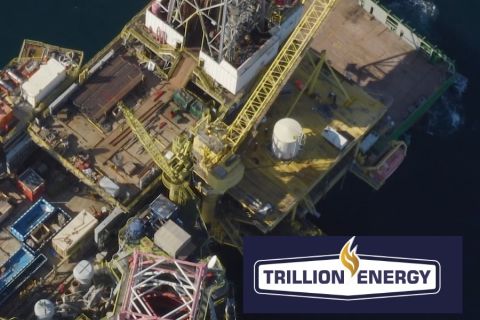
(Source: Weatherford International Plc)
Learn more about Hart Energy Conferences
Get our latest conference schedules, updates and insights straight to your inbox.
In an operating environment where every hour and every dollar are meticulously tracked and reported, the potential of 14 days of nonproductive time is a lifetime and $14 million is a small fortune. This was the situation an international oil company (IOC) encountered while drilling an ultra-deepwater well in the Gulf of Mexico (GoM) when the expandable liner collapsed.
The options available were to re-drill and re-case a 3,000-ft hole or attempt a cased-hole sidetrack through the liner.
The IOC contacted Weatherford requesting an off-the-shelf option that would enable the sidetracking option and ultimately selected the company’s Shallow Angle QuickCut casing-exit system with Multicatch anchor for the job, according to a press release.
The system’s single-trip design provides the same milling and gauge retention as the company’s three-degree system in a two-degree platform. The additional length of the tool accommodates the use of rotary steerable (RSS) and larger casing strings, according to the company.
The system has been used for more than a decade, having success in onshore and offshore applications around the world. Its use in this GoM operation made it the first-ever cased-hole sidetrack to be completed using a whipstock system in 13 3/8-in. expandable liner, according to the release.
“From a capability standpoint, the anchor’s design enabled us to catch the 13.6-in. ID-sized liner with minimal modification,” Tom Emelander, NAM Geozone Operations Manager, Casing exits, Open hole Whipstocks and Multilaterals, for Weatherford, told E&P.
“In addition to the tool’s high-success rate, the low dogleg allowed us to run the following BHAs though it,” he added. “The tool’s two-degree concave design fit the application. Also, by running the system hydraulically, we were able confirm that the ID of the liner was engaged with the anchor.”
The combination of concave and anchor enabled the operator to mill a 13 ½-in. by 32-ft window into the 13 ⅜-in. expandable liner that then allowed the 13 ½-in. RSS BHA and 12 ¼-in. casing to pass the whipstock without issue, according to Emelander.
To open the window to the full drift, two additional milling BHAs were used. A total of 16 mills were shipped, nine of which had custom ODs and were used during the operation, the release stated.
“All operations were performed in about five days, from picking up the whipstock to laying down the 13 ½-in. milling BHA,” he said.
Throughout the operation, the system maintained a low dogleg and successfully transitioned from the main bore to the sidetrack. Overall, the operation was “relatively smooth,” but it was not without its challenges, namely channeled cement and thin walls.
“We knew there was channeled cement on the backside, that along with a thin casing wall of about ⅜ths of inch, means it is possible to jump off the casing and leave a pocket of it there,” he said. “Without cement there to hold you in place, there’s an increased chance of not being able to get the full window length, creating a problem for future BHAs, be it drilling BHAs or casing liners being run.”
Managing pressure and fluid circulation presented another challenge.
“We were limited on pressure and therefore circulation, the gallons per minute that we could actually pump, because of the expendable’s limited pressure capabilities on the backside, the same reason why it collapsed,” he said. “We had to prevent that from happening while milling the window, so the rate we were milling at was reduced from what we would do in a normal application with this system.”
Upon completion of the operation, the operator was able to continue drilling.
“They made a 13 ½-in. motor run, followed by a 13 ½-in. RSS run to finish the hole section,” he said. “From there they then ran the 12 ¼-in. casing.”
The backup plan had the operation not been successful was to sidetrack the well above the expandable liner into the 16-in. casing.
“The problem with that is they would have had to re-drill the entire hole section that the expandable covered, and then possibly find themselves in the exact same scenario as before requiring another expandable liner,” he said. “This would have taken them about an additional 14 days of rig time and about $14 million in spend.”
Recommended Reading
E&P Highlights: April 15, 2024
2024-04-15 - Here’s a roundup of the latest E&P headlines, including an ultra-deepwater discovery and new contract awards.
Trio Petroleum to Increase Monterey County Oil Production
2024-04-15 - Trio Petroleum’s HH-1 well in McCool Ranch and the HV-3A well in the Presidents Field collectively produce about 75 bbl/d.
Trillion Energy Begins SASB Revitalization Project
2024-04-15 - Trillion Energy reported 49 m of new gas pay will be perforated in four wells.
Exxon Ups Mammoth Offshore Guyana Production by Another 100,000 bbl/d
2024-04-15 - Exxon Mobil, which took a final investment decision on its Whiptail development on April 12, now estimates its six offshore Guyana projects will average gross production of 1.3 MMbbl/d by 2027.
US Drillers Cut Oil, Gas Rigs for Fourth Week in a Row-Baker Hughes
2024-04-12 - The oil and gas rig count, an early indicator of future output, fell by three to 617 in the week to April 12, the lowest since November.




